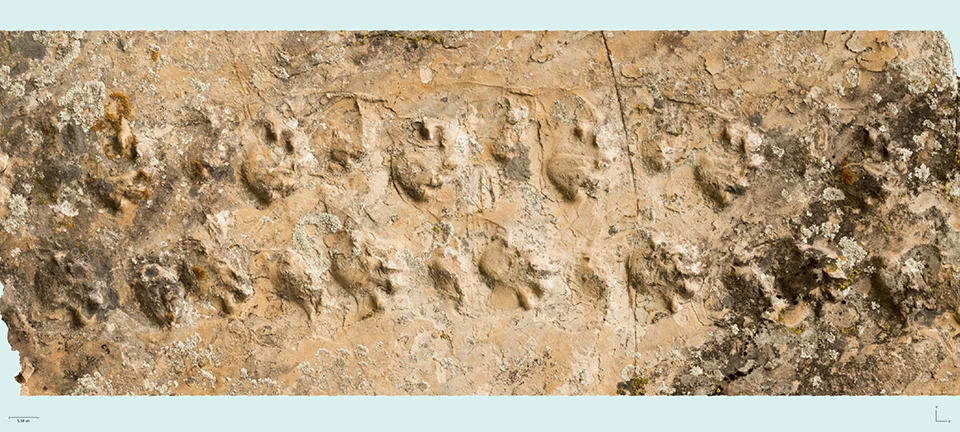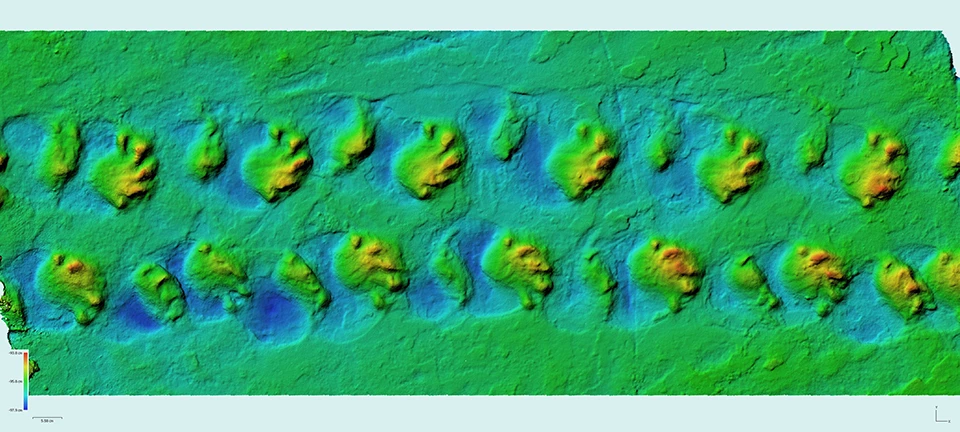Part of a series of articles titled Grand Canyon Collections—Paleontology.
Previous: California Condor Fossil
Article
These fossil tracks were a recent and exciting find for Grand Canyon National Park. These early Permian tracks are 280 million years old and were made when the Grand Canyon area was covered by a sandy desert. These tracks were most likely made by diadectomorphs, a group of advanced amphibians that are thought to be closely related to the first reptiles. The absence of claw marks on these tracks is one of the main features that suggest they were made by an amphibian and not a reptile. It is surprising to find an amphibian living in such an arid environment, since they need to lay their eggs in water. This suggests that diadectomorphs were well adapted to living in deserts and perhaps had more reptilian characteristics than previously thought.
These tracks, located in a large fallen block of the Coconino Sandstone within Grand Canyon National Park are evidence of early tetrapods inhabiting deserts during the late Paleozoic (early Permian).
Read more about the track block here: https://www.nps.gov/articles/grca-fossil-footprints.htm A copy of the publication is available here.
This fossil is managed in situ (in place) at Grand Canyon National Park, Arizona. Learn about paleontology in the National Park Service: https://www.nps.gov/subjects/fossils/index.htm
Learn more about Grand Canyon National Park’s Centennial: https://www.nps.gov/grca/getinvolved/centennial.htm
Grand Canyon—Ichniotherium trackway


Left image
Fossil trackway model with true color overlay.
Credit: NPS image by Jack Wood.
Right image
Fossil trackway model with color ramp overlay.
Credit: NPS image by Jack Wood.
Part of a series of articles titled Grand Canyon Collections—Paleontology.
Previous: California Condor Fossil
Last updated: May 3, 2021